Copyright Tom Ang 2021 All rights reserved. No part of this book may be reproduced in any form or by any electronic or mechanical means, including information storage and retrieval systems, without written permission from the publisher. The Author asserts his moral rights. ISBN 978-0-473-55904-5 Fonts used: Barlow, Trirong, Taviraj Images: Tom Ang Published by Nuku.Press an imprint of AngBookCo Visit tomang.com and nuku.press
Other books Photography: History, Art, Technique Photography - the Definitive Visual History Photo Judging Picture Editing Ang's World Photo Field Guide Creativity for Everyone Digital Photography Step by Step Digital Photography Essentials Digital Photographers Handbook Complete Digital Photography Questions & Angswers Digital Photography: an Introduction The Complete Photographer Digital Photography Masterclass Fundamentals of Photography Digital Photography Through The Year How To Photograph Absolutely Everything Digital Photography Tao of Photography Eyewitness Companion: Photography Picture Editing Photoshop CS For Photography Dictionary of Photography & Digital Imaging Digital Photography Silver Pixels KISS Digital Photography Advanced Digital Photography Complete Digital Photography Private Album Digital Video Handbook Digital Video: An Introduction As photographer The Marco Polo Expedition Joy of Sex Walking the Scottish Highlands Dorset

I n an age dominated by visual communication - almost all of which relies on photographs understanding the picture editing process is vital I wrote that in 1996 for my textbook Picture Editing published by Focal Press for journalism college students. If it was true then, it is forcefully far more so now, over twenty-five years later. At that time, we were dragging ourselves painfully from warm chemical laden baths to the hot, dry land of digital methods.
Now, with all things digital in the very air we breathe, we and our robotic machines are creating more images per day than we did in an entire year only a few years ago. And our busy shutter-fingers add more images each year than did the entire history of film-based images put together. Digital technology has solved numerous photographic problems from exposure to focusing, and even to catching a smile at its emotional peak. These almost intelligent, technical marvels ensure that we can capture technically perfect shots but ... thats still not enough, is it? For all the technology available, a final, refractive difficulty hangs over all photographers. 

Making the selection How do we find the best shot? How do we pick the most emotionally true shots out of all the technically perfect images of a wedding? How do we ensure we dont miss the prize-winning snap out of all the thousands from our trip abroad? And how can be sure about our choice? Yes; there is technology that can make a surprisingly passable attempt at selecting effective images from a bunch of so-so pictures.
However, be confident that if you can make a photograph, you have all the skills of any artificial intelligence system, and more. The difference is that you think more slowly, and you get tired. And although these machines can select images at dizzying speeds from millions of pictures they cannot match a skilled picture editor at spotting image potential. Foreign visuals There is no difference in the image seen by you and by a great picture editor. You both see exactly the same thing. But its like listening to words spoken in another language.
You both hear the same sounds but how much sense it makes depends on who has the better grasp of the language.

A professional picture editor has worked long to be fluent in the language of photography. If you have not, this book offers you many techniques, tips and ideas to help develop your ability to understand what a picture is showing you. Its like a phrase-book for a foreign language. Whether youre looking for a holiday shot to frame or you are picking images for a website, this book can help hone your skills. Picture editing is the perfect - if not also an essential - complement to all the other skills you have learnt for using the camera and lens, working on locations or posing models.
For what do all your investments profit you if you miss a prize-winning image but pick the ordinary shot next to it? Tom Ang Sony New Zealand Digital Imaging Ambassador Auckland 2021 

How to use this book First, lets be clear about the term picture editing . In this book means the process of selecting or choosing images to meet defined aims or needs . Its the process of finding your best shot. Some use the term picture editing to mean image manipulation - the processing an image in software. For that meaning, I use the term image manipulation or post processing. In this book, I share with you my experience from working as an editor of photography magazines, picture editor on a newspaper magazine, teaching photography at university for over 13 years, writing over 40 photography books, and giving numerous workshops around the world as well as judging major competitions.
The first chapter sets out the stall: what the problems or issues are, and the broad principles of dealing with them. Youll find discussion of practical matters in Chapter 2: software, monitor set up and work space. In Chapter 3 we tackle the basics of organising your files to minimise effort. Even if you know it all, it will be worth checking out Chapter 4 that discusses factors that determine speed and accuracy of selection. We get to the bit youve been waiting for at Chapter 5 that talks about reasons and strategies for selecting images. And this is illustrated in Chapter 6 that explores pathways to the best shot.


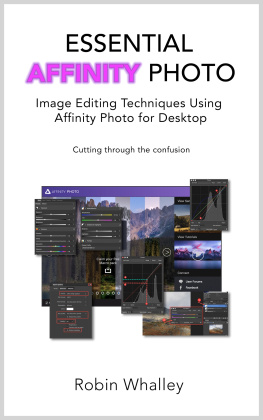
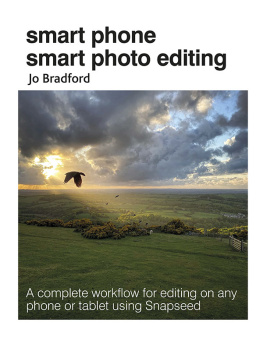
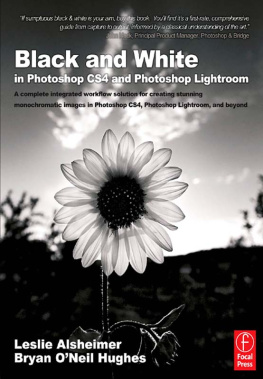
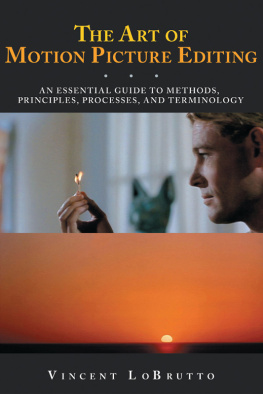

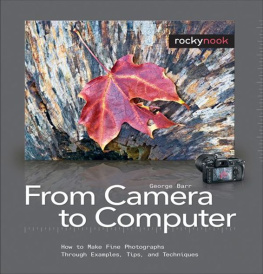
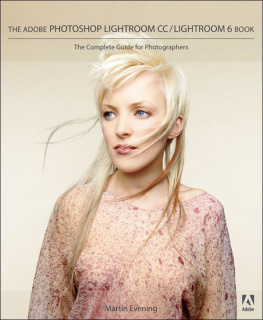
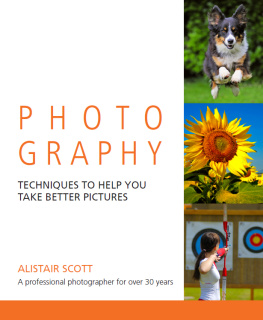
 P I CTURE ED ITI NG DISCOVER YOUR BEST IMAGES , IMPROVE YOUR PHOTOGRAPHY
P I CTURE ED ITI NG DISCOVER YOUR BEST IMAGES , IMPROVE YOUR PHOTOGRAPHY 
 Copyright Tom Ang 2021 All rights reserved. No part of this book may be reproduced in any form or by any electronic or mechanical means, including information storage and retrieval systems, without written permission from the publisher. The Author asserts his moral rights. ISBN 978-0-473-55904-5 Fonts used: Barlow, Trirong, Taviraj Images: Tom Ang Published by Nuku.Press an imprint of AngBookCo Visit tomang.com and nuku.press
Copyright Tom Ang 2021 All rights reserved. No part of this book may be reproduced in any form or by any electronic or mechanical means, including information storage and retrieval systems, without written permission from the publisher. The Author asserts his moral rights. ISBN 978-0-473-55904-5 Fonts used: Barlow, Trirong, Taviraj Images: Tom Ang Published by Nuku.Press an imprint of AngBookCo Visit tomang.com and nuku.press  Other books Photography: History, Art, Technique Photography - the Definitive Visual History Photo Judging Picture Editing Ang's World Photo Field Guide Creativity for Everyone Digital Photography Step by Step Digital Photography Essentials Digital Photographers Handbook Complete Digital Photography Questions & Angswers Digital Photography: an Introduction The Complete Photographer Digital Photography Masterclass Fundamentals of Photography Digital Photography Through The Year How To Photograph Absolutely Everything Digital Photography Tao of Photography Eyewitness Companion: Photography Picture Editing Photoshop CS For Photography Dictionary of Photography & Digital Imaging Digital Photography Silver Pixels KISS Digital Photography Advanced Digital Photography Complete Digital Photography Private Album Digital Video Handbook Digital Video: An Introduction As photographer The Marco Polo Expedition Joy of Sex Walking the Scottish Highlands Dorset
Other books Photography: History, Art, Technique Photography - the Definitive Visual History Photo Judging Picture Editing Ang's World Photo Field Guide Creativity for Everyone Digital Photography Step by Step Digital Photography Essentials Digital Photographers Handbook Complete Digital Photography Questions & Angswers Digital Photography: an Introduction The Complete Photographer Digital Photography Masterclass Fundamentals of Photography Digital Photography Through The Year How To Photograph Absolutely Everything Digital Photography Tao of Photography Eyewitness Companion: Photography Picture Editing Photoshop CS For Photography Dictionary of Photography & Digital Imaging Digital Photography Silver Pixels KISS Digital Photography Advanced Digital Photography Complete Digital Photography Private Album Digital Video Handbook Digital Video: An Introduction As photographer The Marco Polo Expedition Joy of Sex Walking the Scottish Highlands Dorset 



 I n an age dominated by visual communication - almost all of which relies on photographs understanding the picture editing process is vital I wrote that in 1996 for my textbook Picture Editing published by Focal Press for journalism college students. If it was true then, it is forcefully far more so now, over twenty-five years later. At that time, we were dragging ourselves painfully from warm chemical laden baths to the hot, dry land of digital methods.
I n an age dominated by visual communication - almost all of which relies on photographs understanding the picture editing process is vital I wrote that in 1996 for my textbook Picture Editing published by Focal Press for journalism college students. If it was true then, it is forcefully far more so now, over twenty-five years later. At that time, we were dragging ourselves painfully from warm chemical laden baths to the hot, dry land of digital methods. 
 Making the selection How do we find the best shot? How do we pick the most emotionally true shots out of all the technically perfect images of a wedding? How do we ensure we dont miss the prize-winning snap out of all the thousands from our trip abroad? And how can be sure about our choice? Yes; there is technology that can make a surprisingly passable attempt at selecting effective images from a bunch of so-so pictures.
Making the selection How do we find the best shot? How do we pick the most emotionally true shots out of all the technically perfect images of a wedding? How do we ensure we dont miss the prize-winning snap out of all the thousands from our trip abroad? And how can be sure about our choice? Yes; there is technology that can make a surprisingly passable attempt at selecting effective images from a bunch of so-so pictures.  A professional picture editor has worked long to be fluent in the language of photography. If you have not, this book offers you many techniques, tips and ideas to help develop your ability to understand what a picture is showing you. Its like a phrase-book for a foreign language. Whether youre looking for a holiday shot to frame or you are picking images for a website, this book can help hone your skills. Picture editing is the perfect - if not also an essential - complement to all the other skills you have learnt for using the camera and lens, working on locations or posing models.
A professional picture editor has worked long to be fluent in the language of photography. If you have not, this book offers you many techniques, tips and ideas to help develop your ability to understand what a picture is showing you. Its like a phrase-book for a foreign language. Whether youre looking for a holiday shot to frame or you are picking images for a website, this book can help hone your skills. Picture editing is the perfect - if not also an essential - complement to all the other skills you have learnt for using the camera and lens, working on locations or posing models. 
 How to use this book First, lets be clear about the term picture editing . In this book means the process of selecting or choosing images to meet defined aims or needs . Its the process of finding your best shot. Some use the term picture editing to mean image manipulation - the processing an image in software. For that meaning, I use the term image manipulation or post processing. In this book, I share with you my experience from working as an editor of photography magazines, picture editor on a newspaper magazine, teaching photography at university for over 13 years, writing over 40 photography books, and giving numerous workshops around the world as well as judging major competitions.
How to use this book First, lets be clear about the term picture editing . In this book means the process of selecting or choosing images to meet defined aims or needs . Its the process of finding your best shot. Some use the term picture editing to mean image manipulation - the processing an image in software. For that meaning, I use the term image manipulation or post processing. In this book, I share with you my experience from working as an editor of photography magazines, picture editor on a newspaper magazine, teaching photography at university for over 13 years, writing over 40 photography books, and giving numerous workshops around the world as well as judging major competitions.